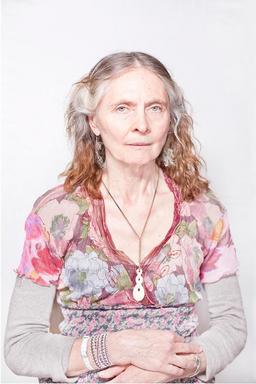Women of Power: Witches, healers, spiritual leaders
Witches, healers, spiritual leaders
Itinerant Exhibition, Poland
7 June - 27 July 2012
On the occasion of the international festival of contemporary photography Photonic Moments 2012 organised by PHOTON, the Slovene Ethnographic Museum is hosting an exhibition from Poland, which was created by Katarzyna Majak. Under the title Women of Power twelve colour photographs depicting witches, healers, sorceresses, visionaries, spiritual leaders and shamanic techniques practitioners are presented.
Women of Wisdom by Katarzyna Majak
Poland is known to be more than 90% catholic. The christianity that was forcefully introduced centuries ago into Poland erased almost completely all the traces of paganism, witchcraft or shamanic traditions. Practically no heritage of this kind could survive and children at schools learn more about Greek, Roman, German or Nordic mythology than anything else.
In a series of 29 portraits I present my personal encounter with the realm of those existing beyond the mainstream - with women that only seem to be homogeneous group - with witches, healers, enchanters, visionaries and spiritual leaders, with whom interviews were made as well.
In the eastern part of Poland, at the border with Belarus only a few traditional healers survived and today can not be found anywhere else in the world. These are the so called 'whisperers' who mix religion and primeval superstitions for healing and removing spells by using prayers. There are also others who are trying to revive the dead traditions: they either believe that witchcraft comes from their ancestors such as grandmothers who could 'see' or were herbalist-healers or that this knowledge and ability survived in the subconscious and that there is a need to learn from outer traditions; and some left and travel abroad (North America, Peru, or New Zealand) to find the answer, to learn, coming back home with a new knowledge mixed with their local traditions- old Slavic ceremonials or demonology.
My search for female wisdom and plurality of spiritual paths hidden within a monoreligious society was for me a most fascinating journey all over Poland from a woman to a woman (the youngest in her early 30s and the oldest in her late 80s) because most of the stories of women I met were never told before.
When taking their photos, the focus was on their eyes, they wear ceremonial dresses and in their hand they hold an 'object of power'. While being photographed they had to stare directly into the camera in order to exert a healing effect on a potential viewer.
Images of Power by Ewelina Jarosz
Contemporary iconography is saturated with witch imagery. From childhood we are accompanied by a schematic drawing of a witch riding her broom in the moonlight. An old, ugly woman with beak nose and wart, wearing a coat, spiky boots and a hat, holding a rod in her rheumatism-twisted hands, or leaning over a magic ball, are the most buoyant witch images whose variations fill children's cartoons. The Internet is overloaded by representations in cheap, Photoshop beefed-up gothic stylistic. Witches are shown as young women with aggressive make-up, in ornamented dresses, fascinated by their own freshly-discovered dark side. Blood, skulls, candles, tattoos complete the witch imagery prevalent in mass culture. Katarzyna Majak's “Women of Power” (2010 - 2011) starts a dialogue with these images. Her series of photographs and interviews with these women are compiled in a book and in three video films. Its title indicates the artist's intent to socially rehabilitate women identifying themselves with widely understood spirituality of their ancestors, Mother Goddess, pagan beliefs, and old sources of wisdom, which may still empower and inspire contemporary secularized consciousness by its valuable content and alternative energy.
The number of photographs is equal to the number of cycles in the moon calendar (29). Women on the portraits ware no make up but their faces emanate with power and self-assurance disclosing a way of being far beyond the culturally imposed coercion about beauty on women... By analogy with asymmetry such women may be treated as a counterpoint to Majak's out-of-the-mainstream typology of the charismatic women of power.
The contrast between the figures dressed in colourful unconventional clothes, and light, even cold, background - a photographic white cube - by means of which the photographer shows the official character of her act to bring visibility to individuals who pass unnoticed in everyday life. The intensified impression of the women's presence is thus connected with a simultaneous distance between us and those recognized in the so-called "circles of the insiders." The series does not hide its staged character where the sterility of presentation gains importance as well as its references to the photographic tradition of mostly anthropological character, the one based on the sociological classification of the portrayed...
Katarzyna Majak's photographic witch sabbath with its refined tension touches upon an issue of a "woman of power" versus her representation. In addition the series' specific formula - 1:1 - creates privileged conditions for the viewers to react to the evidence of the problematic possibility of equivalence.”



